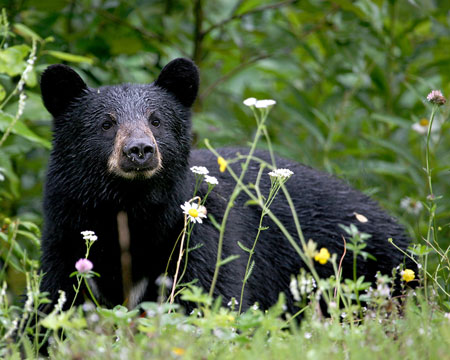By Michelle Werts
Last month, I talked about the connection between climate change and forests in response to President Obama’s inaugural address, but there was another primary topic of that address that could have implications for our environment: immigration. On the surface, immigration and the environment don’t seem to be the likeliest of bedfellows, but they can be closely linked.

As reported by E&E News, more than 600 miles of fencing have been erected along the U.S.-Mexico border in the last six years, cutting through swaths of diverse ecosystems. While designed to keep people from crossing between countries, nature doesn’t recognize political boundaries — and many wildlife species could find themselves on the wrong side of the fence. Wildlife ecologist Clint Epps, who completed a study in 2009 on the potential effect of a U.S.-Mexico border, tells E&E News, “The porous nature of that border has been really important for wildlife. The only reason we have black bears is because they came up from Mexico. They had been exterminated here, but they colonized Big Bend National Park in the 1990s. And the only reason we have jaguars is because they come up from Mexico.”

Over the years, research has shown how fragmented forests — those with roads, agricultural fields, cities, houses, fences, etc. between different stands of trees — can adversely impact wildlife migration. For more than 15 years, American Forests has worked with the U.S. Fish and Wildlife Service in the Lower Rio Grande Valley to repair fragmented forest for the benefit of threatened and endangered species, like ocelot, that make their home along the U.S.-Mexico border. We’ve helped plant more than 1.5 million trees in our efforts to preserve this area that is also home to plant, butterfly, bird and wildlife species that cumulatively number in the thousands.
We’ve worked in Veracruz, Mexico, to restore critically important migratory bird habitat that had been fragmented by urbanization. We’ve supported and advocated for policy changes to protect the threatened northern spotted owl in the Pacific Northwest from fragmentation threats — not to mention Global ReLeaf projects to restore spotted owl habitat.
And I’ve only listed a few of our forest fragmentation activities: Forest fragmentation is a big deal for forests and wildlife. Now, with climate change, many species will likely be adapting their migration patterns. This means that protecting wildlife habitat ranges, which could be a few miles to hundreds of miles, will become increasingly tricky. But it’s a puzzle worth solving.